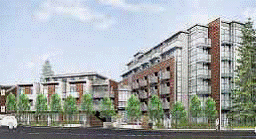An East Vancouver rental project will be paid by taxpayers
Western Investor

Conrad: $40.2 million taxpayer subsidy for 66 ?affordable? Vancouver rentals works out to more than $600,000 per suite. | SUBMITTED
A new joint venture will see taxpayers ante $40.2 million for a private development to create an East Vancouver rental project where subsidized one-bedrooms will rent for $1,500 and two-bed-rooms for $1,950 when it completes this year.
The subsidy works out to approxi-mately $609,000 for each of the 66 “affordable” rental units. In com-parison, the current benchmark price of an existing condo apart-ment in East Vancouver is $569,000, according to the Real Estate Board of Greater Vancouver.
The 111-unit rental complex, now under construction on East 18th Avenue, involves Cressey Develop-ment Group and Canada Mortgage and Housing Corp. (CMHC) and is meant to include lower-cost rentals for working families. These rents are geared to match 30 per cent of the typical household income in East Vancouver. Through an agreement with the City of Vancouver, this af-fordability level will be maintained for 60 years.
According to a November survey by PadMapper, an online rental registry, the median rent for a one-bedroom Vancouver apartment is $2,100 per month, with two-bed-room rents at a median of $3,150.
CMHC’s Rental Construction Fi-nancing Initiative provides low-cost construction loans for 10-year terms to enable developers such as Cressey to build affordable rental housing, according to Jean-Yves Duclos, the federal minister of families, children and social development and minister responsible for CMHC.
The Cressey project, known as the Conrad, faced opposition from local residents who complained about the higher density. It took five years to achieve rezoning, according to Cres-sey vice-president Jason Turcotte. During that period, he said, there were five consecutive interest rate hikes and double-digit construction cost increases.
“The long process, although some-what necessary and often with some good result, [does] have a price, for sure,” Turcotte said.

